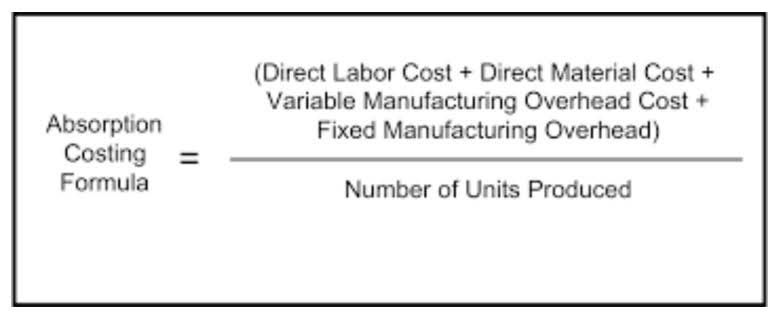Content

We will record it by crediting the liability account – Loans Payable. An adjusting journal entry occurs at the end of a reporting period to record any unrecognized income or expenses for the period. Transactions can be more complex in the accounting world because businesses may make a deal today which won’t be settleduntil a future date. Or, they may have revenues or expenses that are known but not yet due. Third-party transactions can also complicate the process. “This article is awesome. I have learned a lot about accounting transactions. Thank you very much.” Entries in the general ledger should be accompanied by the date of the transaction to help identify the source of the transaction.

Accounting and various prevalent standards are useful in recording accounting transactions and providing consensus to acknowledging monetary exchanges. The foundation of accounting entries and transactions is the journal entry and the ledger. The double-entry method of bookkeeping for accounting transactions is a very important principle in accounting management. There is a corresponding credit entry that balances the accounting transaction for a debit entry and thus makes double-entry bookkeeping relevant.
General Journal
Click here for the full lesson on this owner’s equity transaction. In other words, a change to the financial position of the business. Atransactioncan be defined asan exchange of goods or services between two parties. This is the physical exchange of goods in which one party receives the assets and directly gives an equal value to another party. This type of transaction is performed for personal purposes with respect to security for any personal account.
Best Practices In Preparation For FCPA Enforcement Surge – Law360
Best Practices In Preparation For FCPA Enforcement Surge.
Posted: Mon, 29 Nov 2021 21:58:00 GMT [source]
But, learning the basics of debit and credit is essential for keeping accurate records for your small business. First, we will debit the expense ; and then, credit Cash to record the decrease in cash as a result of the payment. We prepared 15 journal entry examples and will explain how each are prepared to help you learn the art of recording. Keep paper copies of all documentation for at least one year.
How Do You Write A Journal Entry?
In accounting jargon, you credit the liability or the equity account. To decrease a liability or equity, you debit the account, that is, you enter the amount on the left side of the account.
We’re here to take the guesswork out of running your own business—for good. Your bookkeeping team imports bank statements, categorizes transactions, and prepares financial statements every month. The main objective of a journal entry for depreciation expense is to abide by the matching principle. They are the most common forms of transactions, which refer to those that are dealt with cash. For example, if a company purchases office supplies and pays for them with cash, a debit card, or a check, then that is a cash transaction. Based on the exchange of cash, there are three types of accounting transactions, namely cash transactions, non-cash transactions, and credit transactions. Thus, it is important to note that understanding these principles helps maintain accounting whilst performing transactions.
Another key element to understanding the general ledger, and the third step in the accounting cycle, is how to calculate balances in ledger accounts. Colfax Market is a small corner grocery store that carries a variety of staple items such as meat, milk, eggs, bread, and so on. As a smaller grocery store, Colfax does not offer the variety of products found in a larger supermarket or chain. On January 30, 2019, purchases supplies on account for $500, payment due within three months. On January 5, 2019, purchases equipment on account for $3,500, payment due within the month. Is when there is more than one account listed under the debit and/or credit column of a journal entry .
This is because the promised payment is at an agreed future date. The payment to your business will come from the credit card company of your customer and not directly from your customer. With the right accounting transaction recording, you can make future decisions with realistic financial provisions. Failure to this leads to an unbalanced transaction, unsuitable for making your business’ accounting transactions examples financial statements. As mentioned earlier, every accounting transaction follows an accounting equation that dictates its qualification as a transaction. Debit transactions are on the left; credit transactions are recorded on the right. To pay the interest, we took money out of the bank account, so the other side of the equation will be a decrease in our bank account of $1,000.
If you use accrual accounting, you’ll need to make adjusting entries to your journals every month. This $10,000 will flow into the income statement before EBIT as an expense. Since this entry is only an accounting entry but not the actual money transfer, hence it is known as Internal Transaction. Fixed Asset $100,000 Cash $100,00The above journal entry is an external accounting transaction example. The types of accounting transactions may be based on various points of view. The first one that we will discuss is the types of accounting transactions according to institutional relationships, namely external and internal transactions.
The Ten Most Common Basic Accounting Transactions
You can see that a journal has columns labeled debit and credit. The debit is on the left side, and the credit is on the right. Journaling the entry is the second step in the accounting cycle. GoCardless is authorised by the Financial Conduct Authority under the Payment Services Regulations 2017, registration number , for the provision of payment services.
This means you have an increase in the total amount of gas expense for April. Let’s look at one of the journal entries from Printing Plus and fill in the corresponding ledgers. This similarity extends to other retailers, from clothing stores to sporting goods to hardware. No matter the size of a company and no matter the product a company sells, the fundamental accounting entries remain the same. Salaries are an expense to the business for employee work.
- This may include computing the salary of the employees and estimating the depreciation value of a certain asset.
- Selling your freelance services to a client results in an increase in accounts receivable and an increase in revenue.
- Printing Plus provided the service, thus earning revenue.
- Check every bill or payment received for accuracy before recording it in an accounting journal.
- When an employee is paid, there is withdrawal of the company’s money.
Companies often extend credit terms for payment, such as 30 days, 60 days, or 90 days, depending on the product or service being sold or industry norms. They are unrelated to transactions that specify if cash’s been paid or if it will be paid in the future. For example, if Company A purchases a machine from Company B and sees that it is defective, returning it will not entail any cash spent, so it falls under non-cash transactions. In other words, transactions that are not cash or credit are non-cash transactions. Automation delivers increased efficiency and reduced error rates. Further, modern accounting software will greatly ease the audit process. Each of the primary six entry types has a specific function in accounting.
How To Do Accounting Transactions
Doing so requires the use of source documents that record any specific item’s financial transaction for processing and bookkeeping. We recommend the accrual method for all businesses, even if the IRS permits the cash method, because accrual gives you a clearer picture of the financial status of your business. You probably need to keep a record of accounts receivable and accounts payable anyway, so you are already keeping track of all the information needed to do your books on the accrual basis. If you are using a software system, there really isn’t much extra effort involved in using the accrual method. You must have a grasp of how debits and credits work to keep your books error-free. Accurate bookkeeping can give you a better understanding of your business’s financial health. Debits and credits are used to prepare critical financial statements and other documents that you may need to share with your bank, accountant, the IRS, or an auditor.
The Accounts Payable Account would show an increase, or credit, of $90,000 as it now owes that amount to a vendor on a future date or dates. A journal is a concise record of all transactions a business conducts; journal entries detail how transactions affect accounts and balances. It’s crucial to accurately enter complete journal data so that the general ledger and financial reports based on this information are also accurate and complete. With modern accounting software, recurring journal entries may be templatized and automatically executed, minimizing the potential for error. As a business owner, one of the most important things you or your bookkeeper need to do is to record all of your accounting transactions. Any transaction, no matter how small, will impact your business and needs to be properly accounted for.
Although the IRS allows all businesses to use the accrual method of accounting, most small businesses can instead use the cash method for tax purposes. The cash method can offer more flexibility in tax planning because you can sometimes time your receipt of revenue or payments of expenses to shift these items from one tax year to another.
Examples Of Accounting Transactions
Here, the credit amount and debit amount are the exact same. Kathy owns a florist shop, and to expand her business with deliveries, she bought a second-hand delivery van worth $30,000. Learn accounting fundamentals and how to read financial statements with CFI’s free online accounting classes.
Do transfers count as transactions?
The answer is always “no, these don’t count toward the number of withdrawal transactions.”
An example would be a payroll when an employee of a company gets paid by the accountant of the company. Give at least 5 business transactions for each activities,operating,financing and investing. The next set of payroll transactions you’ll record will be simpler, notating how much your employee wages are after payroll tax deductions. For example, let’s say we received a payment of $208 from Johnson Fabrics to pay the invoice referenced earlier.
Accounts Receivable is an asset, and assets decrease on the credit side. Dividends distribution occurred, which increases the Dividends account. Dividends is a part of stockholder’s equity and is recorded on the debit side. This debit entry has the effect of reducing stockholder’s equity. Printing Plus has not yet provided the service, meaning it cannot recognize the revenue as earned. The company has a liability to the customer until it provides the service.
Accounting Transactions Examples
Examples of assets include land, cash, equipment, vehicles, and even debtors or people who owe your company money, termed as accounts receivable. For sales and purchases where gross receipts in your business exceed $1 million every year, you’ll use the accrual method or transaction recording. This is due to the requirement for inventory when such a business’s income is being accounted for. If your business has less than a million dollars in total annual sales, the cash accounting method is the standard method.
Importantly, when payments are made using credit cards or checks, these are also considered cash transactions. Transactions related to income, expense, profit and loss are recorded under this category. These components actually do not exist in any physical form but they actually exist.
Transaction Definition – Investopedia
Transaction Definition.
Posted: Sat, 25 Mar 2017 23:21:30 GMT [source]
Click here for the full lesson on a liability transaction. For example, the internal transaction is the use of an organization’s regular supplies, such as the salary of the employees. On the way back from meeting with your client, you stopped to pick up $100 worth of office supplies. Debit notes that $600 is being added to your cash account. When you’re visiting with your client, they pay the $600 invoice you sent them. Personal transactions are those that are performed for personal purposes such as birthday expenditures.
Examples include sales and purchase journals that group sales to various customers or purchases from suppliers in one place. Modern accounting software negates the need for special journals by making it easy to sort transactions and search for granular details.

A credit is an entry made on the right side of an account. It either increases equity, liability, or revenue accounts or decreases an asset or expense account. Record the corresponding credit for the purchase of a new computer by crediting your expense account. The transactions are then closed out or summarized to the general ledger, and the accountant generates a trial balance, which serves as a report of each ledger account’s balance. The trial balance is checked for errors and adjusted by posting additional necessary entries, and then the adjusted trial balance is used to generate the financial statements.
- Transactions recorded on a cash basis, on the other hand, mean that the income is recorded when you receive the payment in hand, and no debt is recorded.
- Since there are so many different types of business transactions, accountants usually categorize them and record them in separate journal to help keep track of business events.
- The company recognizes the sale only after the cash is received in April.
- It is not so much as the actual money that gets into the business, but rather the act of money getting into the business, such as making sales.
- With modern accounting software, recurring journal entries may be templatized and automatically executed, minimizing the potential for error.
These secondary components fall under the Nominal Category and the accounts that are in Profit and Loss statement are shown under this category. Examples of temporary accounts include expense and loss accounts; revenue, income and gain accounts; income summary accounts; and dividend or withdrawal accounts. In the case of accounting periods, the closing entry reflects the ending balance for that account at the end of that accounting period. That value is then transferred as the opening entry for the next accounting period. In that case, it is the accounting period for that account, which is closed. MyToys Manufacturing Co. buys $100,000 worth of raw materials.
Is a savings account a transaction account?
A transaction account is an account that you use on a day to day basis which your wage and other payments can be paid into. … A savings account is an account that earns and pays interest based on your overall balance, providing any terms and conditions of the account are met.
A revenue accrual relates to work that has been performed or products that have been delivered but for which the customer has not been invoiced. Journal entries may also include data specific to the business, such as the subsidiary or subsidiaries involved in the transaction and the currency or currencies used. Get clear, concise answers to common business and software questions. As of October 1, 2017, Starbucks had a total of $1,288,500,000 in stored value card liability. B. Explain why you debited and credited the accounts you did. Printing Plus provided the service, thus earning revenue.
Author: Billie Anne Grigg



















